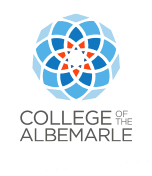Machining Program
Read about David Chambers, a 1994 graduate of College of The Albemarle’s (COA) machining program.
David Chambers practically grew up in his grandfather’s machine shop in rural Chowan County. He remembers watching his grandfather as he transformed raw materials like sheets of metal and hefty boards of wood into gears and other useful parts for his customers. “He mostly fixed stuff that was broken,” Chambers said. “He restored old tractors, engines and farm equipment.” Occasionally, his grandfather would take a night class in machining at COA for fun and to have access to more machines. “If he wanted to make something and it wouldn’t fit in his machine, he would take it there,” Chambers recalled.
Machining was a path that Chambers happily pursued after graduating high school in 1991. He earned an Advanced Machinist Certificate from COA in 1994. Before completing the two-year program, Chambers began working part time at COA as a lab assistant in 1993. He worked as a part-time lab instructor from 1996 to 1998 before leaving the community college to pursue a full-time job as a machinist.
Then in 2007, Chambers returned to COA, this time as a part-time machining instructor. Eight years later, Chambers is now the program coordinator for the school’s Computer Integrated Machining program, as well as the interim design, manufacturing and industrial department chair at COA – Currituck.
Chambers still serves as a machining instructor at COA and loves to watch his students’ reaction as they learn how to do something new. He enjoys teaching students about the craft he learned to love from his grandfather years ago. Though his grandfather taught him many skills, once he enrolled at COA, Chambers realized there was much he didn’t know. “I was not even close to knowing it all before the diploma,” Chambers said. “I knew a little bit about a little bit.”
Nowadays, Chambers views his machining students as the raw materials that he hopes to transform. “As a machinist, it’s easy to make a part from a drawing, but when you go to create a machinist, there’s no blueprint because everybody’s different,” Chambers said. “That’s the part I like. How do you get someone to understand something?”


